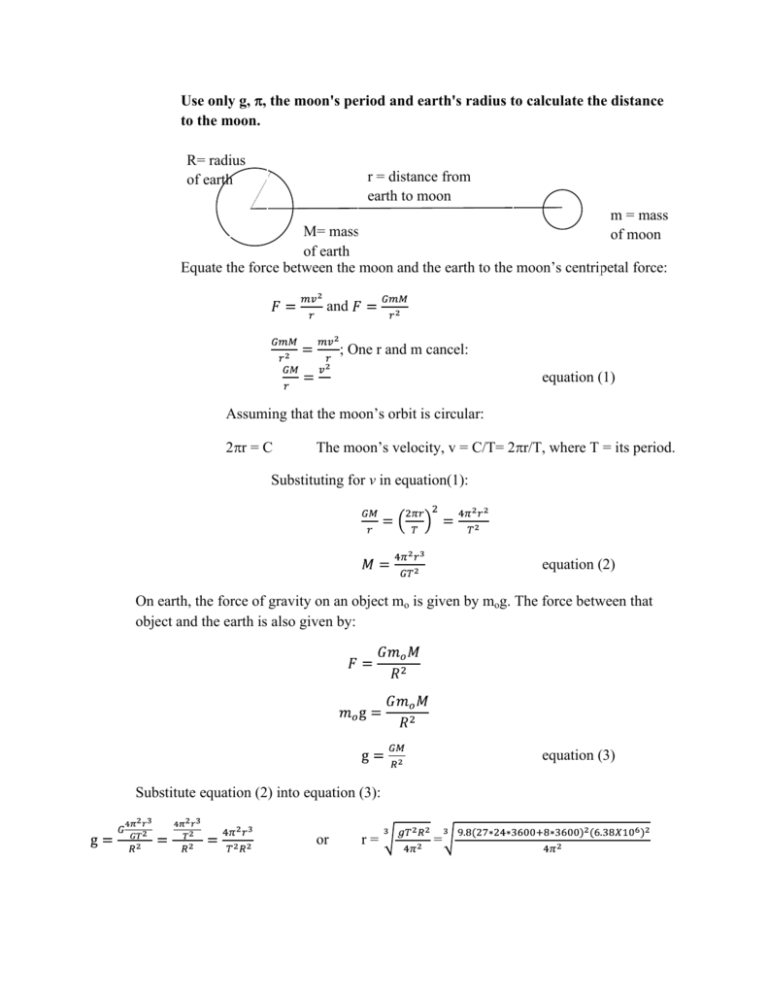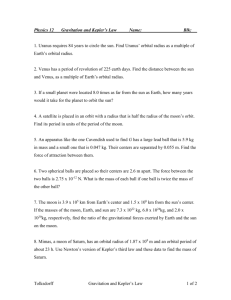Use only g, π, the moon's period and earth's radius to calculate the
advertisement

Use only g, , the moon's period and earth's radius to calculate the distance to the moon. R= radius of earth r = distance from earth to moon m = mass of moon M= mass of earth Equate the force between the moon and the earth to the moon’s centripetal force: and ; One r and m cancel: equation (1) Assuming that the moon’s orbit is circular: 2r = C The moon’s velocity, v = C/T= 2r/T, where T = its period. Substituting for v in equation(1): equation (2) On earth, the force of gravity on an object mo is given by mog. The force between that object and the earth is also given by: equation (3) Substitute equation (2) into equation (3): or r= = = 3.8 X 108 m, pretty close to the mean distance between the earth and the moon. The sun is 106.1 earth diameters wide. That means its radius is 106.1*6.38 X106 m = 6.76918 x 108 m. The earth-sun distance is 149 597 871 km = 1.49 597 871 1011 m. Using the last equation we had for g but from the point of the sun we obtain: = 289.6 m/s2 = With gs we can now obtain the distance between the sun and any planet using its period of revolution. Let’s use Jupiter as an example. r= =7.779 X1011 m = 7.779 X108 km = 7.7857 X108 km is the accepted value Go back to equation (2) and plug in r and G to get the mass of the earth: = kg (accepted value = 5.9736 × 1024 kg) In a simple two-body case, r1, the distance from the center of the primary to the barycenter is given by: Lunar Orbiter 3: Semimajor axis 2,694 km (1,674 mi) Eccentricity .33 Inclination 20.9° Apoapsis 1,847 km Period: =208.1 min = 6.396 X 1022 kg (accepted value: 7.35 X 1022 kg) where:r1 = a is the distance between the centers of the two bodies; m1 and m2 are the masses of the two bodies.









